 W
WAdelaide Railway Station is the central terminus of the Adelaide Metro railway system. All lines approach the station from the west, and it is a terminal station with no through lines, with most of the traffic on the metropolitan network either departing or terminating here. It has nine platforms, all using broad gauge track. It is located on the north side of North Terrace, west of Parliament House. The Adelaide Casino occupies part of the building that is no longer required for railway use. Until 1984, Adelaide station was also the terminus for regional and interstate passenger trains, but there are no longer any regular regional train services in South Australia, and all interstate services are now handled at Adelaide Parklands Terminal.
 W
WThe Australian Museum is a heritage-listed museum at 1 William Street, Sydney central business district, New South Wales, Australia currently under renovation. It is the oldest museum in Australia, with an international reputation in the fields of natural history and anthropology. It was first conceived and developed along the contemporary European model of an encyclopedic warehouse of cultural and natural history and features collections of vertebrate and invertebrate zoology, as well as mineralogy, palaeontology and anthropology. Apart from exhibitions, the museum is also involved in Indigenous studies research and community programs. In the museum's early years, collecting was its main priority, and specimens were commonly traded with British and other European institutions. The scientific stature of the museum was established under the curatorship of Gerard Krefft, himself a published scientist.
 W
WBankstown Reservoir is a heritage-protected water tower and a local landmark situated in the suburb of Bankstown, Sydney, New South Wales, Australia. Located 22 kilometres (14 mi) west of Sydney CBD, the reservoir is elevated and was built on reinforced concrete piers, which is one of the oldest of this type that is still in use. The reservoir features various decorative attributes, plastered by hand, which lack in other functional reservoirs. Established in 1920, the reservoir serves a large area of South-Western Sydney.
 W
WBiloela House is a house at the centre of a heritage-listed historic precinct on Cockatoo Island, Sydney Harbour, New South Wales, Australia. It was added to the Australian Commonwealth Heritage List on 22 June 2004.
 W
WCarss Cottage is a heritage-listed former cottage and park ranger's residence and now historical museum locate in Carss Bush Park at 74 Carwar Avenue, Carss Park, Georges River Council, New South Wales, Australia. It was built during 1865 by Scottish masons. The property is owned by the Georges River Council. It was added to the New South Wales State Heritage Register on 2 April 1999.
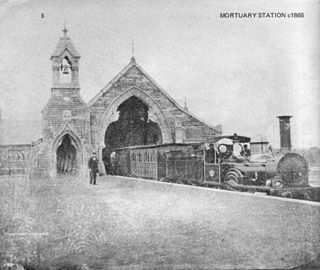 W
WThe Cemetery Station No. 1 was a railway station on the Rookwood Cemetery railway line in Sydney, New South Wales, Australia. The station operated between 1867 and 1948 and served the Rookwood Cemetery.
 W
WThe Central Local Court House or Police Law Courts or Central Police Court is a heritage-listed building located at 98 Liverpool Street, in the central business district of Sydney, New South Wales in Australia. Constructed in the Federation Free Classical style based on original designs by Colonial Architect, James Barnet, the building structure was completed in 1892 under the supervision of Barnet's successor, Government Architect, Walter Liberty Vernon. It is also known as Sydney Central Local Court House, Police Law Courts and Central Police Court. The property is owned by the Department of Justice, a department of the Government of New South Wales. It was added to the New South Wales State Heritage Register on 2 April 1999. The court house is located in a precinct that includes the Downing Centre, and buildings housing the Family Court of Australia and the Federal Circuit Court in Sydney. Adjacent to the court house is Brickfield Place, a brick paved courtyard with seating and planter boxes, constructed in 1892, assessed as a good example of urban design for public open space.
 W
WThe Chief Secretary's building is a heritage-listed state government administrative building of the Victorian Free Classical architectural style located at 121 Macquarie Street, 65 Bridge Street, and at 44-50 Phillip Street in the Sydney central business district of New South Wales, Australia. The ornate five-storey public building was designed by Colonial Architect James Barnet and built in two stages, the first stages being levels one to four completed between 1873 and 1881, with Walter Liberty Vernon completing the second stage between 1894 and 1896 when the mansard at level five and the dome were added.
 W
WConvict Barracks Block is a heritage-listed convict barracks within the Prison Barracks Precinct, Cockatoo Island, Sydney Harbour, New South Wales, Australia. It was added to the Australian Commonwealth Heritage List on 22 June 2004.
 W
WMess Hall is a heritage-listed part of the Prison Barracks Precinct at Cockatoo Island, New South Wales, Australia. It is also known as Mess Hall (former). It was added to the Australian Commonwealth Heritage List on 22 June 2004.
 W
WMilitary Guard Room is a heritage-listed military installation within the Prison Barracks Precinct, Cockatoo Island, Sydney Harbour, New South Wales, Australia. It was added to the Australian Commonwealth Heritage List on 22 June 2004.
 W
WPrison Barracks Precinct is a heritage-listed prison precinct at Cockatoo Island, Sydney Harbour, New South Wales, Australia. It was added to the Australian Commonwealth Heritage List on 22 June 2004.
 W
WCommissariat Store is a heritage-listed storehouse at 115-127 William Street, Brisbane City, City of Brisbane, Queensland, Australia. It is bordered by William Street, Queen's Wharf Road and the Brisbane River, and is the birthplace of Queensland. It was designed by William John Dumaresq and built from 1828 to 1913 by convict labour under the direction of Captain Logan as a permanent Commissariat Store for the Moreton Bay penal settlement. It is also known as Government Stores, State Stores Building, and Colonial Store. It was added to the Queensland Heritage Register on 21 October 1992.
 W
WThe Crown Street Public School is a heritage-listed public primary school located at Crown Street, Surry Hills, City of Sydney, New South Wales, Australia. It was designed by George Allen Mansfield and built from in 1869 by A. Scott, Mackay and Son. It was added to the New South Wales State Heritage Register on 2 April 1999.
 W
WThe Darlinghurst Courthouse is a heritage-listed courthouse building located adjacent to Taylor Square on Oxford Street in the inner city Sydney suburb of Darlinghurst in the City of Sydney local government area of New South Wales, Australia. Constructed in the Old Colonial Grecian style based on original designs by Colonial Architect, Mortimer Lewis, the building structure was completed in 1880 under the supervision of Barnet's successor, James Barnet. It was added to the New South Wales State Heritage Register on 2 April 1999.
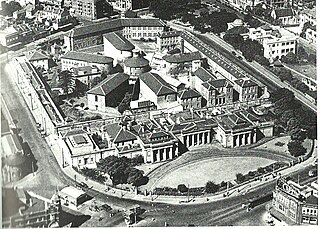 W
WThe Darlinghurst Gaol is a former Australian prison located in Darlinghurst, New South Wales. The site is bordered by Victoria, Burton and Forbes streets, with entrances on Forbes and Burton Streets. The heritage-listed building, predominately designed by New South Wales Colonial Architect Mortimer Lewis, was closed in 1914 and has subsequently been repurposed to house the National Art School.
 W
WThe Department of Education building is a heritage-listed state government administrative building of the Edwardian Baroque architectural style located in Bridge Street in the Sydney central business district in the City of Sydney local government area of New South Wales, Australia. The large public building was designed by Colonial Architect George McRae and built in two stages, the first completed in 1912, with John Reid and Son completing the second stage in 1938. It is also known as the Department of Education Building and the Education Building. The property was added to the New South Wales State Heritage Register on 2 April 1999.
 W
WThe Department of Lands building is a heritage-listed state government administrative building of the Victorian Renaissance Revival architectural style located in Bridge Street in the Sydney central business district of New South Wales, Australia. The large three-storey public building was designed by Colonial Architect James Barnet and built in different stages, with Walter Liberty Vernon and William Edmund Kemp designing various components of the building. The builder was John Young.
 W
WEmanuel School is an independent Jewish co-educational early learning, primary and secondary day school, located on a heritage-listed campus in the Sydney eastern suburb of Randwick, in New South Wales, Australia. The school was founded in 1983 in Woollahra. The current Randwick site was purchased in 1984 and was opened in 1985. In 1986, Prime Minister Bob Hawke officially opened the school. Emanuel School currently caters for approximately 800 students from Kindergarten to Year 12. The Principal has been Mr. Andrew Watt since 2018. The school is affiliated with the Jewish Communal Appeal, the Junior School Heads Association of Australia (JSHAA), and the Association of Heads of Independent Schools of Australia (AHISA).
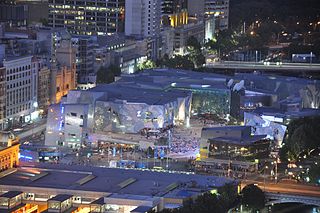 W
WFederation Square is a venue for arts, culture and public events on the edge of the Melbourne central business district. It covers an area of 3.2 ha at the intersection of Flinders and Swanston Streets built above busy railway lines and across the road from Flinders Street station. It incorporates major cultural institutions such as the Ian Potter Centre, Australian Centre for the Moving Image (ACMI) and the Koorie Heritage Trust as well as cafes and bars in a series of buildings centred around a large paved square, and a glass walled atrium.
 W
WFort Queenscliff, in Victoria, Australia, dates from 1860 when an open battery was constructed on Shortland's Bluff to defend the entrance to Port Phillip. The Fort, which underwent major redevelopment in the late 1870s and 1880s, became the headquarters for an extensive chain of forts around Port Phillip Heads. Its garrison included volunteer artillery, engineers, infantry and naval militia, and it was manned as a coastal defence installation continuously from 1883 to 1946. The other fortifications and armaments around the Heads were completed by 1891, and together made Port Phillip one of the most heavily defended harbours in the British Empire.
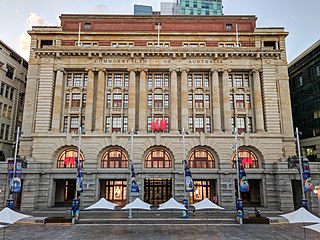 W
WThe General Post Office is a heritage landmark building in Perth, Western Australia. Located on the western side of Forrest Place in the city's central business district, its imposing stone facade is in the Beaux-Arts style. The building was completed in 1923 after almost a decade of construction, which was protracted by World War I and the resulting shortages of construction materials. At the time of its opening, it was the largest building in Perth.
 W
WThe General Post Office is a heritage-listed landmark building located in Martin Place, Sydney, New South Wales, Australia. The original building was constructed in two stages beginning in 1866 and was designed under the guidance of Colonial Architect James Barnet. Composed primarily of local Sydney sandstone, mined in Pyrmont, the primary load-bearing northern façade has been described as "the finest example of the Victorian Italian Renaissance Style in NSW" and stretches 114 metres (374 ft) along Martin Place, making it one of the largest sandstone buildings in Sydney.
 W
W107–109 George Street, The Rocks is a heritage-listed restaurant and former retail building, residence and bakery located at 107–109 George Street, in the inner city Sydney suburb of The Rocks in the City of Sydney local government area of New South Wales, Australia. It was built during 1860. It is also known as Rockpool Restaurant (former); and William Blue Dining. The property is owned by Property NSW, an agency of the Government of New South Wales. It was added to the New South Wales State Heritage Register on 10 May 2002.
 W
WThe Government House is the heritage-listed vice-regal residence of the Governor of New South Wales, Australia, located on Conservatorium Road in the Sydney central business district adjacent to the Royal Botanic Gardens, overlooking Sydney Harbour, just south of the Sydney Opera House. Constructed between 1837 and 1843, the property has been the vice-regal residence of the Governor since Sir George Gipps, except for two brief periods; the first between 1901 and 1914, when the property was leased to the Commonwealth of Australia as the residence of the Governor-General of Australia, and the second from 1996 to 2011.
 W
WThe Great Hall of the University of Sydney, is one of the principal structures of The University of Sydney, New South Wales, Australia, with a public interior used for formal ceremonies, conferences, recitals and dinners. The Hall, located in the Main Quadrangle on the Camperdown campus, is a symbol of the university's stately history and an excellent example of Victorian Academic Gothic revival architecture. Completed in July 1859, the Great Hall soon became a tourist attraction; the writer Anthony Trollope wrote home in 1874 that the Hall was "the finest chamber in the colonies", and that no college of Oxford or Cambridge possessed a hall "of which the proportions are so good".
 W
WHong Kong House, also known since 1995 as the Hong Kong Economic and Trade Office, Sydney, is a landmark heritage building and former hotel in the Sydney central business district, City of Sydney, New South Wales, Australia. Built in 1891 to a design by Ambrose Thornley, it is located on 80 Druitt Street, at the corner with York Street, and is adjacent to other prominent heritage landmarks, the Sydney Town Hall and the Queen Victoria Building. Formerly known as Gresham Hotel, the property was added to the New South Wales State Heritage Register on 2 April 1999.
 W
WInternational House is a heritage-listed commercial building at 14-16 York Street, in the Sydney central business district, in the City of Sydney local government area of New South Wales, Australia. It was designed by Robertson & Marks and built during 1913 by Howie, Brown & Moffat, Master Builders. It is also known as Pomeroy House. It was added to the New South Wales State Heritage Register on 2 April 1999.
 W
WSt John's College, or the College of St John the Evangelist, is a residential college within the University of Sydney.
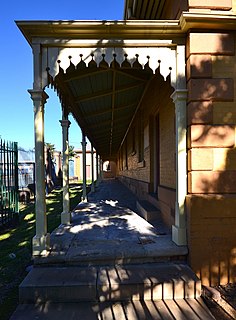 W
WLiverpool Courthouse is a heritage-listed former courthouse at 251 Bigge Street, Liverpool, City of Liverpool, New South Wales, Australia. It was built during 1820. It is also known as Liverpool Courthouse (former) and Potential Archaeological Site. It was added to the New South Wales State Heritage Register on 3 November 2017.
 W
W79 Lower Fort Street is a heritage-listed former hotel and now shop and residence at 79 Lower Fort Street, Millers Point, City of Sydney, New South Wales, Australia. It was built in 1842 as a hotel, and variously traded as a hotel or shop until 1870, after which time it operated solely as a shop. It was variously known as the Young Princess Hotel, Whalers Arms Hotel and Brown's Family Hotel in its licensed years. It was added to the New South Wales State Heritage Register on 2 April 1999.
 W
WMamre is a heritage-listed former farm homestead complex, grain cropping, pastoral property and wool production and now residence, community facility, market gardening and nursery production located at Mamre Road in the western Sydney suburb of Orchard Hills in the City of Penrith local government area of New South Wales, Australia. It was built from 1822 to 1832. The property is owned by the New South Wales Department of Planning and Infrastructure. It was added to the New South Wales State Heritage Register on 2 April 1999.
 W
WThe MLC Building is a heritage-listed office building located at 42-46 Martin Place in the Sydney central business district, in the City of Sydney local government area of New South Wales, Australia. It was designed by Bates Smart & McCutcheon and built from 1936 to 1938 by Concrete Constructions Limited. It is also known as Mutual Life & Assurance Building. It was added to the New South Wales State Heritage Register on 2 April 1999. From the time of its construction and for many years thereafter, the building served as the offices for Australian life insurance company, Mutual Life & Citizens Assurance Company Limited. As of December 2018 the anchor tenant was Norton Rose Fulbright, formerly Henry Davis York, an international law firm.
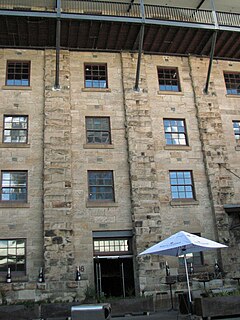 W
WThe MSB Stores Complex is a heritage-listed former warehouse and gas manufacturing plant and now offices and storage located at 2-4 Jenkins Street, in the inner city Sydney suburb of Millers Point in the City of Sydney local government area of New South Wales, Australia. It was built from 1844. It is also known as Maritime Services Board Office and Store and Australian Gas Light Company Stores and Offices. It was added to the New South Wales State Heritage Register on 18 April 2000.
 W
WThe Old Police Station, The Rocks is a heritage-listed former police station and now home to Sergeant Lok, a Modern Asian restaurant and bar, that is located at 127-129 George Street in the inner city Sydney suburb of The Rocks in the City of Sydney local government area of New South Wales, Australia. It was designed by James Barnet and built in 1882 by W. Cains and Sons. The property is owned by Property NSW, an agency of the Government of New South Wales. It was added to the New South Wales State Heritage Register on 10 May 2002.
 W
WSt Paul's College is an Anglican residential college which is affiliated with the University of Sydney in Sydney, Australia. Founded in 1856 by an 1854 act of the New South Wales Legislative Council, it is Australia's oldest university college. St Paul's is familiarly referred to as "Paul's", its residents as "Paulines" and its alumni as "Old Paulines". Alumni include prime ministers, deputy prime ministers, federal and state government ministers, High Court of Australia justices, Court of Appeal presidents and justices, Supreme Court chief justices and justices, pioneering surgeons and physicists, Australian of the Year recipients and 29 Rhodes Scholars.
 W
WThe Queen Victoria Building is a heritage-listed late-nineteenth-century building designed by the architect George McRae located at 429–481 George Street in the Sydney central business district, in the Australian state of New South Wales. The Romanesque Revival building was constructed between 1893 and 1898 and is 30 metres (98 ft) wide by 190 metres (620 ft) long. The domes were built by Ritchie Brothers, a steel and metal company that also built trains, trams and farm equipment. The building fills a city block bounded by George, Market, York and Druitt Streets. Designed as a marketplace, it was used for a variety of other purposes, underwent remodelling and suffered decay until its restoration and return to its original use in the late twentieth century. The property is owned by the City of Sydney and was added to the New South Wales State Heritage Register on 5 March 2010.
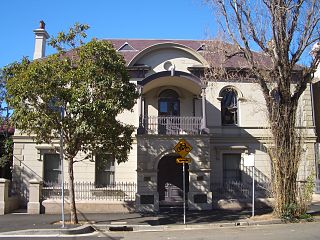 W
WThe Redfern Town Hall is a landmark sandstone civic building located in the heart of Redfern, New South Wales, Australia. built in 1870 and designed in the Victorian Regency style by George Allen Mansfield. It was the seat of the Municipality of Redfern from 1870 to 1948. It stands at 73 Pitt Street, Redfern.
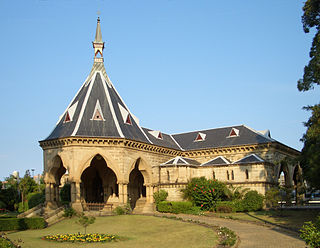 W
WRegent Street railway station, formerly known as Mortuary railway station, was a railway station on Sydney's Rookwood Cemetery railway line. Funeral trains departed from the station, bound for Rookwood Cemetery. The station found later use as a part of Sydney Yard. The ornate Gothic building is still standing on the western side of Sydney Yard at Chippendale, close to Central railway station and Railway Square. It was added to the New South Wales State Heritage Register on 2 April 1999.
 W
WThe Registrar-General's building, also called the Land Titles Office, is a heritage-listed building located in the Sydney central business district, in New South Wales, Australia. The building is currently used by the Land and Property Information division of the Department of Finance, Services and Innovation, part of the Government of New South Wales. It was added to the New South Wales State Heritage Register on 2 April 1999.
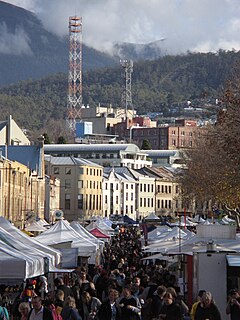 W
WSalamanca Place is a precinct of Hobart, the capital city of the Australian state of Tasmania.
 W
WSandgate is a heritage-listed former residence, repatriation hospital and heritage centre at 128 Belmore Road, Randwick, City of Randwick, New South Wales, Australia. It was built during 1879 by Simeon Pearce. It is also known as Kilkerran and Felton. The property is owned by Randwick City Council. It was added to the New South Wales State Heritage Register on 2 April 1999.
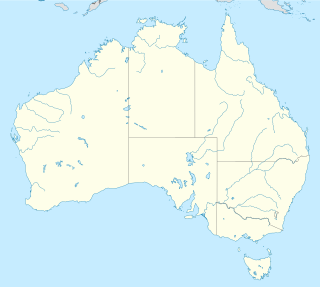 W
WThe sandstone universities are an informally defined group comprising Australia's oldest tertiary education institutions. Most were founded in the colonial era, the exceptions being the University of Queensland (1909) and The University of Western Australia (1911). All the universities in the group have buildings constructed primarily of sandstone. Membership of the group is based on age; some universities, such as the private Bond University, have sandstone-plated buildings but are not considered sandstone universities.
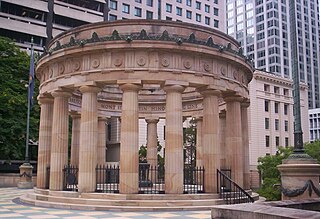 W
WThe Shrine of Remembrance is located in ANZAC Square, between Ann Street and Adelaide Street, in Brisbane, Queensland, Australia. With its 'Eternal Flame', the Shrine is a war memorial dedicated to the Australian and New Zealand Army Corps (Anzacs).
 W
WSydney Hospital is a major hospital in Australia, located on Macquarie Street in the Sydney central business district. It is the oldest hospital in Australia, dating back to 1788, and has been at its current location since 1811. It first received the name Sydney Hospital in 1881.
 W
WThe Sydney Mint in Sydney, New South Wales, Australia, is the oldest public building in the Sydney central business district. Built between 1811 and 1816 as the southern wing of the Sydney Hospital, it was then known as the Rum Hospital. In 1854 a mint was established on the site with the hospital building used to house mint staff as well as providing a residence for the Deputy Mint Master. A coining factory was built at the rear. Both of these structures have exceptional heritage significance and have been associated with major events in the colonial history of New South Wales.
 W
WThe Sydney Town Hall is a late 19th-century heritage-listed town hall building in the city of Sydney, the capital city of New South Wales, Australia, housing the chambers of the Lord Mayor of Sydney, council offices, and venues for meetings and functions. It is located at 483 George Street, in the Sydney central business district opposite the Queen Victoria Building and alongside St Andrew's Cathedral. Sited above the Town Hall station and between the city shopping and entertainment precincts, the steps of the Town Hall are a popular meeting place.
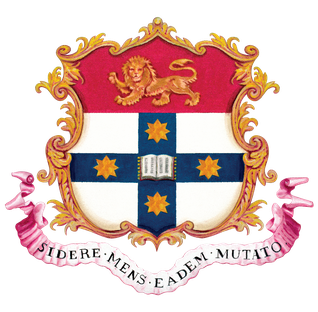 W
WThe University of Sydney is an Australian public research university in Sydney, Australia. Founded in 1850, it is Australia's first university and is regarded as one of the world's leading universities. The university is known as one of Australia's six sandstone universities. Its campus, spreading across the inner-city suburbs of Camperdown and Darlington, is ranked in the top 10 of the world's most beautiful universities by the British Daily Telegraph and the American Huffington Post. The university comprises eight faculties and university schools, through which it offers bachelor, master and doctoral degrees.
 W
WThe Treasury Building, also previously known as the New Public Offices, is a heritage-listed former government public administration building located at 21 Queen Street, Brisbane City, City of Brisbane, Queensland, Australia. It was built from 1886 to 1928 for the Queensland Government. On 21 October 1992 the Italian Renaissance style building was added to the Queensland Heritage Register.
 W
WThe Treasury Building, or the Colonial Treasury Building, The Old Treasury Building, or the Treasury Building & Premier's Office, is a heritage-listed former government administration building and now hotel located at the junction of Macquarie and Bridge streets in the central business district of Sydney in New South Wales, Australia. Commenced in 1849 and completed in stages in 1851, 1853, 1900 and 1919 in the Victorian Neo-Classical and Italian Palazzo styles by NSW Colonial and Government architects Mortimer Lewis, Edmund Blacket, Walter Liberty Vernon, and George McRae, the building has been used variously by the NSW Treasury, the Audit Office, the Premier's Department, the Police Department, and the Ministry of Transport. In 1981 the building was sold to the InterContinental Hotel group, with a major hotel complex built on part of the site and much of the heritage building restored.
 W
WThe University of Sydney Quadrangle is a prominent quadrangle formed through the construction of several Sydney sandstone buildings located within The University of Sydney Camperdown Campus, adjacent to Parramatta Road, in Sydney, New South Wales, Australia. The Quadrangle is also called The University of Sydney Main Quadrangle. The Quadrangle and its associated main building and interior was listed on the City of Sydney local government heritage list on 14 December 2012.
 W
WThe Unwin's Stores are heritage-listed shops and formerly a residence located at 77-85 George Street in the inner city Sydney suburb of The Rocks in the City of Sydney local government area of New South Wales, Australia. It was built from 1843 to 1846 for Frederick Wright Unwin. It is also known as Unwins. The property is owned by Property NSW, an agency of the Government of New South Wales. It was added to the New South Wales State Heritage Register on 10 May 2002.
 W
WThe Upper Canal System, also called the Southern Railway Aqueduct and the Cataract Tunnel, is a heritage-listed operational gravity-fed aqueduct that supplies some of the potable water for Sydney, in New South Wales, Australia. The aqueduct comprises 54 kilometres (34 mi) of open canals, tunnels, and closed pipelines that connect the Upper Nepean Scheme with the Prospect Reservoir. The aqueduct is managed by the Sydney Catchment Authority on behalf of WaterNSW, an agency of the Government of New South Wales. It was listed on the New South Wales State Heritage Register on 18 November 1999.
 W
WVentnor is an historic home in the suburb of Randwick, a suburb of Sydney in New South Wales, Australia. It was built as the home of George Kiss, one of the earliest politicians in Sydney. It is listed on the local heritage register and is listed on the Register of the National Estate.
 W
WWales House is a heritage-listed former newspaper office building, bank building and now hotel located at 64-66 Pitt Street, in the Sydney central business district, in the City of Sydney local government area of New South Wales, Australia. It was designed by Manson & Pickering and built from 1922 to 1929 by Stuart Bros. It is also known as the Bank of NSW Building. The property is owned by Wales House Nominees Pty Ltd. It was added to the New South Wales State Heritage Register on 2 April 1999. Located on the junction of Pitt, Hunter and O'Connell Streets, the building served as offices for John Fairfax and Sons' The Sydney Morning Herald from 1927 to 1955 before being acquired by the Bank of New South Wales, commonly known as "The Wales", hence the building's name. The building has subsequently been converted into an international hotel, as part of the Radisson Blu hotel chain.
 W
W22 York Street, Sydney is a heritage-listed commercial office and former warehouse located at 22 York Street, in the Sydney central business district, in the City of Sydney local government area of New South Wales, Australia. It has now been incorporated into the Landmark Building development. The property is privately owned. It was added to the New South Wales State Heritage Register on 2 April 1999.